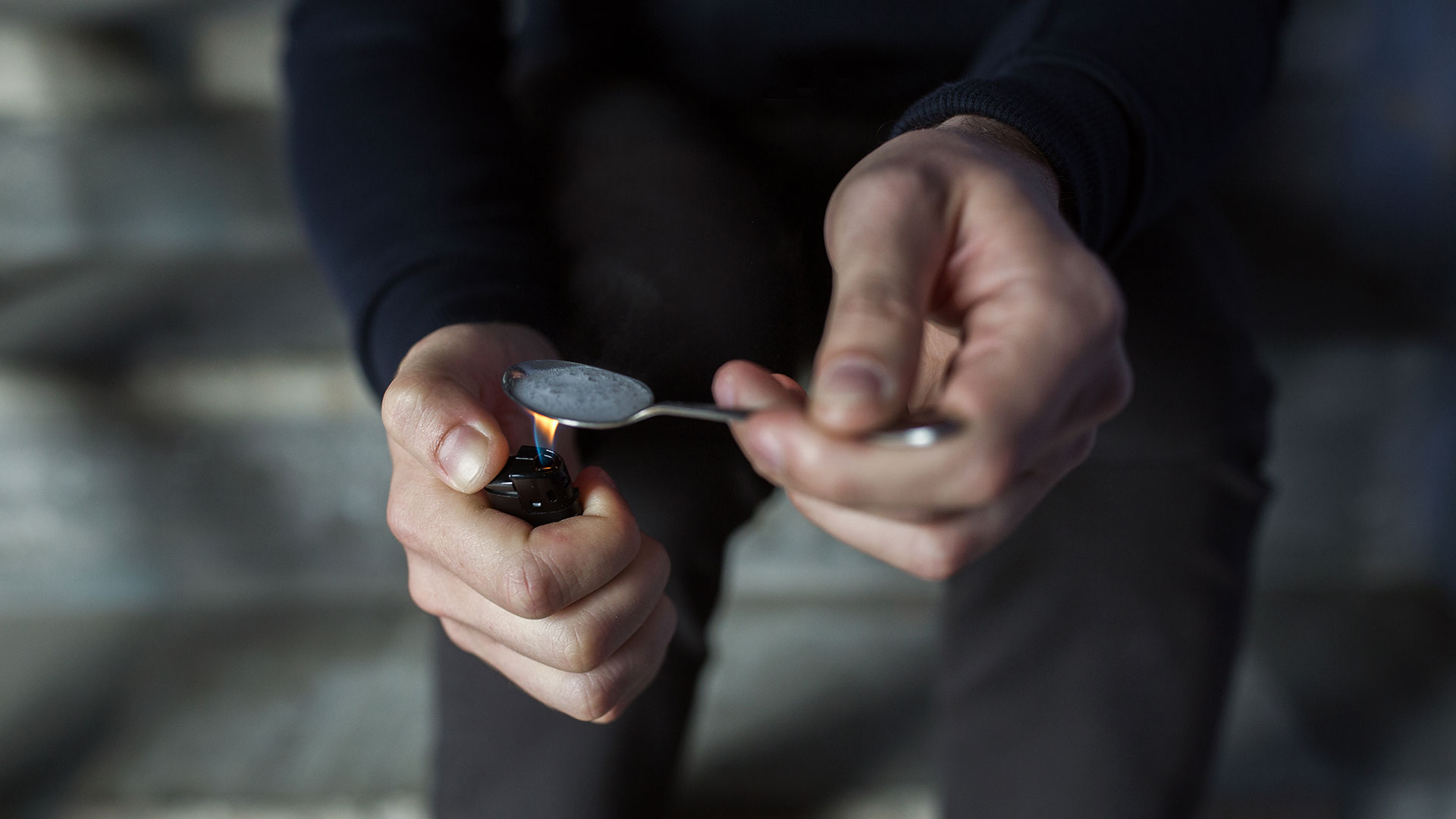06 Dec How Long Does Crack Stay in Your Urine?
Table of Content
Crack cocaine is a fast-acting drug that lasts no longer than an hour. However, although the “high” from crack is temporary, the drug stays in your system and remains detectable for much longer. Many factors affect how long the drug will remain present in your urinary tract and how long after use it can be found in a urine drug test. But before we specify how long, let’s gain a better understanding of the drug, and why it is one of the most commonly abused substances in the United States.
What is Crack?
Crack is an extremely dangerous substance that is derived by crystalizing cocaine. It is usually sold as a powder, but can also be commonly found in small blocks of crystals. Ranging in colors from transparent red to yellowish pale or rosy white, crack has a very distinct sound when the drug is abused. That is because the drug requires its user to heat the crystals in order to achieve its effects, which results in a flurry of popping and snapping sounds—hence its name “crack.”
Crack cocaine is far more potent typical cocaine that is sold on the street; the purity of crack is what gives it such profound effects, where in a matter of seconds the drug travels to the brain is unleashes a wave of dopamine into the user’s nervous system and brain. Most users of crack begin to reach peak level of effect within the first two minutes, and after about 15 minutes, the drug will rapidly decrease its effect.
The rapid intense effects in the brain differentiate in a matter of minutes. This enables users to continue using the drug again and again within a very short timeframe.
The more the user abuses crack, the more the user will depend on the drug; addiction occurs quickly and aggressively, and with continual repeat abuse, crack impairs the body’s health dramatically and deteriorates metabolism rates.

Why is crack so addictive?
The intense highs and lows of smoking crack cocaine are the cornerstone reasons why the drug is so addictive. When the drug is abused, crack cocaine intoxication leaves the user overwhelmed with a feeling of euphoria. All problems and anxieties essentially disintegrate into the thin air. Many users of the drug also experience an intense burst of energy and concentration as well as an irrational sense of self-importance.
However, the comedown of crack is the complete opposite—and is widely considered to be the most uncomfortable experience associated with drug withdrawal symptoms. Seconds after the high disappears, a deep and dark depression will rush over the user. Many are often unable to sleep or eat, and are crippled by a constant state of anxiety and edginess.
Over longer extended use of the drug, the comedown effects begin to intensify. Muscle spasms coupled with convulsions and insomnia make users extremely hostile. Paranoia and anger begin to slowly seep in with continual abuse, and because of this, many users are simply unable to quit the drug—and risk a life of jail, poverty or death.
Habitual use of crack cocaine puts users at a risk of the following side effects:
- Increased heart rate
- Increased blood pressure
- Insomnia
- Damage to lungs and facial septum
- Increased body temperature
- Paranoia, confusion and violent mood swings
- Malnourishment
- Lost interest eating or sleeping
- Consistent thoughts of taking crack; prioritizing life around obtaining more crack
Why is crack so popular?
Unlike cocaine, which is a very expensive drug, crack tends to be a much cheaper alternative. It is not uncommon to see users that are addicted to cocaine develop a crack cocaine addiction solely due to the high price of cocaine. Other drugs such as opiates (e.g., Percocet, heroin, etc.) and benzodiazepines (Xanax, Valium, Klonopin, etc.) are much more expensive when compared to crack.
How is crack processed in the Body?
The body’s natural instinct interprets the drug as a toxic. The liver is an essential organ in metabolizing crack cocaine. Because the drug is considered as a poison, the body works diligently to crack out of the system as fast as possible. The metabolite benzoylecgonine is the compound in which is found the detect crack cocaine in a user’s urine.
How long does crack stay in your urine?
A study by Labcorps reveals the average length of time crack stays in a user’s urine is between two to four days. Crack is not consistent in potency; the stronger the drug is in regards to its two main metabolites (i.e., benzoylecgonine, ecgonine), the more likely the drug will remain present.
After 20 days, the body will no longer carry any traits of metabolites, which is the longest crack will remain detectable in a urine test.
Urine drug test screenings are one of the most common drug tests used today. Urine screenings are able to detect traces of crack much quicker than other screenings such as hair samples (hair testing), saliva tests, and blood testing. Please note, detection times are variable depending on many factors and methodology of drug testing). Urine tests are also very popular because the testing requires little equipment, which makes them a convenient and inexpensive method of screening. Although urine tests are not as accurate as blood screenings, this testing method is very reliable and can provide screeners with a comprehensive evaluation of a user’s biochemistry state.
What Factors Determine how long crack will stay in your system?
Many assume that crack stays in the system for a fixed period of time. For several reasons, this belief is inaccurate.
Amount Administered: Urine screenings don’t automatically detect crack as based on time length, but instead, focuses on the quantity of the drug. For instance, if a user smokes 30 mg at the same another user smoke 15 mg, the urine screening may show different results.
Time Span: For users with a very low tolerance of the drug, crack will metabolize much faster. That’s because the body interprets crack as a foreign (and dangerous) substance. The body will focus most of its energy on detoxing the drug as fast as possible.
For users who have abused the drug for an extended period of time, the body will become more complacent to the presence of crack, and will metabolize the drug at a much slower rate. Additionally, long-term users of crack may also have the drug stored in their fatty tissues (e.g., liver), which in regards to a urine test, which may mean the drug lasts longer in the urinary tract. With each additional dose, crack becomes more and more present throughout the body, which accumulates to different fatty tissues.
Many times, short-term users of crack will ingest less of the drug when compared to a long-term substance abuser. Short-term users also won’t have crack stored in the body’s fatty tissues.
Height, weight and metabolism: A person’s individual body structure and genetics play an important role in determining how fast crack leaves a user’s system and urinary tract. For users with a slower metabolism, this means their body takes longer to “interpret” foreign items (e.g., food, drugs, liquids, etc.), and in effect, will remain detectable longer than that of a user with a faster metabolism.
What is metabolism?
Metabolism is a natural process that occurs inside the body. It essentially works as “the brain” of your digestive system, determining how energy from ingested materials is stored in the body. The body’s metabolism synthesizes nutrients, allowing it to function properly.
Crack is metabolized differently for each individual, so the detection window to test positive varies depending on a number of factors. Exercise, diet and water intake also affect how the body metabolizes nutrients. Typically, crack users who are heavier in weight are working harder to synthesize their fat and where store energy, which in relation to a urine sample test, the drug will likely stay in the body longer (longer detection time) than individuals who weigh less.
Additional Risks and Dangers of Crack
Substance abusers of crack not only put themselves in danger of many life threatening and debilitating side effects—they also put the lives of others in jeopardy as well.
- Violent outbursts and uncontrollable behavior: Long-term and short-term substance abuse of crack can often become violent. Individuals under the influence of crack cocaine become emotionally unstable. Users will have a deeply over-exaggerated perception of their emotional state; in other words, users that were sad or angry before getting high will likely triple or quadruple their emotional state once crack is ingested. For users with spouses and young children, crack may become an extremely dangerous substance as their vulnerability to endure violent or disturbing outbursts are likely to occur.
- Intensified sexual compulsions: Crack, for many users, increases the urge to have sex. However, this increase in libido is also combined with an increase in irrational thinking. This puts many, either willingly or unwillingly, in potentially dangerous intercourse. Because crack increases the urge to have sex, addicts will most likely have multiple partners, and less likely to perform protected sex.
- Much higher increase to breaking the law or putting themselves in a dangerous situation: Because of the extremely addictive effects and euphoria associated with crack cocaine, addicts will do just about anything to get their hands on more of the drug. Whether this means stealing from a drug dealer or other user, exchanging sex for drugs, or agreeing to do something dangerous or illegal in return of crack—substance users will most likely comply with any demand or any scenario that will involve more crack.
- Life’s priorities take on an entirely new meaning: Life before crack and life after are two very different worlds. Before crack, priorities were likely in check or at least managed, bills were paid and family members were taken care of. But once crack becomes a part of life, there is only one priority: find and do more crack. This drastic change in lifestyle usually results in ending family relationships, friendships, employment, hobbies, etc.
Treatment options for crack
Although crack may be an extremely difficult obstacle to overcome, sobriety is very much possible. With the support and resources, any one can overcome their addiction. However, the road getting there can be very uncomfortable.
The first method of treatment is detoxification. Crack detoxification may be performed in conjunction with other medications, through cognitive therapy, tapering off, or stopping “cold-turkey.”
Inpatient treatment at a professional treatment center is widely considered to be the most effective form of treatment with the highest level of success. Thanks to around-the-clock care, inpatient staff and doctors are able to monitor patients and evaluate the evidence-based method of treatment for the lowest discomfort. Inpatient treatment requires patients to live at the facility until no traces of crack is detected in the system. From there, patients have a multitude of options such as entering a long-term rehab program, residing in a sober living environment, agreeing to long-term therapy, or becoming active in social community programs such as AA.
Positives of inpatient care:
- Around-the-clock care and support
- Intensive care provides a stronger foundation of tools
- The entirety of your day is focused on you and your health
- You can build meaningful relationships with people enduring the same addiction and struggle
Cons of inpatient care:
- You’re not free to come and go as you please
- Your schedule is “mapped out,” which means you have to get up at a certain time as well as receive meals on an organized basis.
- You will have to take time off from work, which may impact income and providing family support
- More expensive treatment option
Outpatient treatment, although providing patients with more flexibility to take care of personal responsibilities, is a less recommended treatment option for individuals suffering from crack addiction. Due to crack’s highly addictive effects, and need for frequent use, outpatient treatment is unlikely to provide patients with the help they actually need. However, outpatient treatment involves many of the same methods found in inpatient services such as cognitive behavioral therapy, talking with other users of crack, etc.
Pros of Outpatient care:
- Flexibility in your schedule so you can take care of your children and daily responsibilities
- If you’re able to detox successfully, you’ve proven to be self-resilient in the face of certain failure
- Cheaper option
Cons of Outpatient care:
- You put yourself at extreme risk of relapse due to your fragile state
- Influences, such as friends, times of day, smells, sights, etc., may intensify cravings
- You will not be able to establish bonds with users enduring the same struggle as you

Sources:
Lautieri, Amanda. “How Long Does Cocaine Stay in Your System?” Rehabs.com. 28 Feb. 2019. https://luxury.rehabs.com/cocaine-addiction/how-long-does-it-stay-in-your-system/
T, Buddy. “ How Long Does Cocaine Stay in Your System?” Verywell Mind. 13 Nov. 2018. 28 Feb. 2019. https://www.verywellmind.com/how-long-does-cocaine-stay-in-your-system-80231
Weber, Lee. “How Long Does Crack Stay in Your System?” Addiction Blog. 5 March 2012. 28 Feb. 2019. https://www.verywellmind.com/how-long-does-cocaine-stay-in-your-system-80231






No Comments